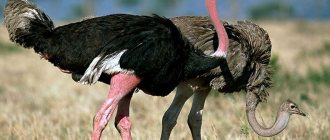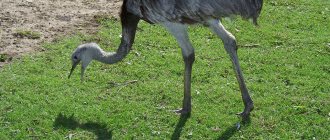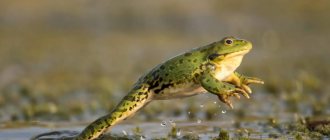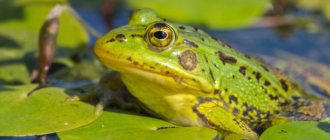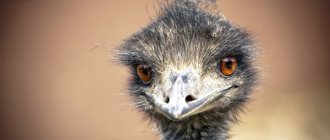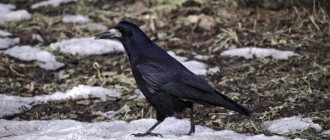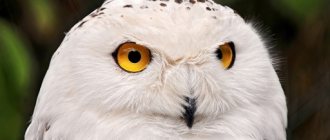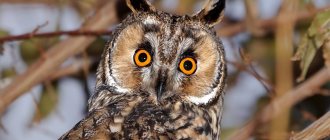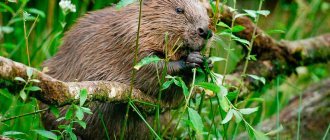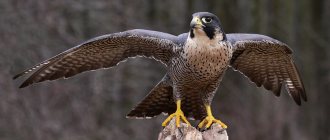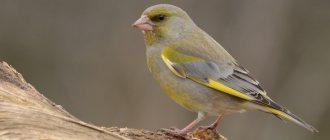The vast majority of people know what an ostrich is, and they will definitely mention that it is the largest bird in the world. Some will add that ostriches bury their heads in the sand. Someone will remember that they cannot fly. But the life of these large flightless birds is not limited to well-known facts and myths. It is much more interesting and includes many unexpected aspects.
The vast majority of people know what an ostrich is, and they will definitely mention that it is the largest bird in the world
Origin of the species and description
Photo: African ostrich
The ostrich is the only living member of the family Struthionidae and the genus Struthio. Ostriches share their order Struthioniformes with emu, rhea, kiwi and other ratites - smooth-faced (ratite) birds. The earliest fossil of an ostrich-like bird discovered in Germany is identified as a Central European Paleotis from the Middle Eocene - a flightless bird 1.2 m tall.
Video: African ostrich
Similar finds in the Eocene deposits of Europe and the Moicene deposits of Asia indicate a widespread distribution of ostrich-like animals in the interval from 56.0 to 33.9 million years ago outside of Africa:
- on the Hindustan Peninsula;
- in Western and Central Asia;
- in the south of Eastern Europe.
Scientists agree that the flying ancestors of modern ostriches fed on the ground and were excellent sprinters. The extinction of ancient lizards gradually led to the disappearance of competition for food, so birds became larger, and the ability to fly simply ceased to be necessary.
Subspecies
To date, only 4 subspecies have survived that live in Africa. There used to be more of them, but due to the extermination of birds, their population has greatly decreased. Let's consider each subspecies separately:
- Common ostrich. The largest species. It has a bald spot on its head, and its paws and neck are colored pinkish-red. The female has whitish-pink skin instead of red. The egg of the common ostrich has star-shaped pores.
- Masai ostrich. Lives in East Africa. During the breeding season, its skin becomes bright red, the rest of the time it has a pinkish tint. Females have brownish-gray plumage and whitish limbs.
- Somali ostrich. Some scientists and researchers classify it as a separate species due to reproductive isolation revealed by DNA analysis. Female Somali ostriches are always larger than males. Their weight reaches 150 kg and their height is about 2.5 meters. The skin color of males is bluish-gray, while females have bright brown feathers.
- Southern ostrich. They are dirty gray and light black in color. The habitat is extensive: Namibia, Zambia, Angola.
Appearance and features
Photo: African ostriches
Ostriches are classified as ratites - non-flying birds, with a flat chest without a keel, to which wing muscles are attached in other birds. At the age of one year, ostriches weigh about 45 kg. The weight of an adult bird ranges from 90 to 130 kg. The height of sexually mature males (from 2-4 years old) ranges from 1.8 to 2.7 meters, and females - from 1.7 to 2 meters. The average lifespan of an ostrich is 30-40 years, although there are long-livers who live up to 50 years.
The ostrich's strong legs are devoid of feathers. The bird has two toes on each foot (whereas most birds have four), and the nail of the big inner toe resembles a hoof. This skeletal feature arose during evolution and determines the excellent sprinting capabilities of ostriches. Muscular legs help the animal accelerate up to 70 km/h. The wings of ostriches, with a span of about two meters, have not been used for flight for millions of years. But the giant wings attract the attention of partners during the mating season and provide shade for the chicks.
Adult ostriches have amazing resistance to heat and can withstand temperatures up to 56°C without much stress.
The soft and loose feathers of adult males are mostly black, with white tips at the tips of the wings and tail. Females and young males are grayish-brown. The head and neck of ostriches are almost naked, but covered with a thin layer of down. An ostrich's eyes reach the size of billiard balls. They take up so much space in the skull that an ostrich's brain is smaller than any of its eyeballs. Although the ostrich egg is the largest of all eggs, relative to the size of the bird itself, it is far from in first place. The egg, weighing a couple of kilograms, is only 1% heavier than the female. In contrast, the kiwi egg, the largest compared to its mother, makes up 15-20% of her body weight.
Description of the bird
Representatives of the order Ostriformes are the largest birds on the planet. Adults often grow to 2.5-2.7 m and weigh more than 150 kg. Ostriches have a dense build. The neck is long. The head is small and slightly flattened. The flat and straight beak is soft to the touch. Its upper part is equipped with a keratinized beak. The rounded eyes are quite large - about 5 cm in diameter. The upper eyelids are framed by long eyelashes.
Representatives of the Ostrich family cannot fly, since their wings are underdeveloped. At their ends there are 2 fingers equipped with claws. Long legs have well-developed muscle mass. Thanks to their strong limbs, birds are able to reach enormous speeds - about 75 km/h. In the process of evolution, ostriches have preserved two toes on their feet – the 3rd and 4th. One of them is fully developed and equipped with a claw, the other is much shorter and does not have a claw.
The body is almost completely covered with loose plumage. An exception is the area of skin in the chest area, this is the so-called chest callus. The neck, head and legs are also not feathered. On these parts of the body there is only a thin layer of barely noticeable fluff. Exposed areas of skin may have a blue-gray or pink tint.
Where does the African ostrich live?
Photo: Black African ostrich
The inability to fly limits the African ostrich's habitat to the savannah, semi-arid plains and open grassy areas of Africa. In a densely forested tropical ecosystem, a bird is simply unable to notice a threat in time. But in open space, strong legs and excellent vision allow the ostrich to easily detect and overtake many predators.
Four distinct subspecies of ostrich live on the continent south of the Sahara Desert. The North African ostrich lives in the northern part of Africa: from the west coast to certain areas in the east. The Somali and Masai subspecies of ostriches live in the eastern part of the continent. The Somali ostrich is also common north of the Maasai, in the Horn of Africa. The South African ostrich lives in southwestern Africa.
Another recognized subspecies, the Middle Eastern or Arabian ostrich, was discovered in parts of Syria and the Arabian Peninsula as recently as 1966. Its representatives were slightly smaller in size than the North African ostrich. Unfortunately, due to severe desiccation, large-scale poaching and the use of firearms in this region, the subspecies was completely wiped out from the face of the earth.
Natural habitats
Several decades earlier, or maybe centuries, common ostriches were found in fairly large areas that were associated with the northwestern territories of Africa. Therefore, the bird inhabited many African countries, such as Uganda, Ethiopia, Egypt, Algeria, Senegal, Mauritania and others.
Currently, the habitat of these unique birds has been significantly reduced, so ostriches are found only in some countries of the African continent.
The southern territories of Ethiopia, northeastern Kenya, and Somalia are considered to be the natural habitat of Somali ostriches. This subspecies prefers to live alone or in pairs.
Masai ostriches are found throughout Kenya, Tanzania and Ethiopia. The southern subspecies prefers to live in southwest Africa. In addition, they are found in Namibia and Zambia, Zimbabwe, Botswana and Angola. Their habitat is also associated with the Kunene and Zambezi rivers.
What does the African ostrich eat?
Photo: Flightless omnivorous bird African ostrich
The basis of the ostrich's diet is a variety of herbaceous plants, seeds, shrubs, fruits, flowers, ovaries and fruits. Sometimes the animal catches insects, snakes, lizards, small rodents, i.e. such prey that it is able to swallow whole. In particularly dry months, the ostrich can go without water for several days, being content with the moisture contained in the plants.
Since ostriches have the ability to grind food, for which they are accustomed to swallowing small pebbles, and are not spoiled by an abundance of vegetation, they can eat what other animals are not able to digest. Ostriches "eat" almost everything that comes their way, often swallowing bullet shells, golf balls, bottles and other small objects.
Choosing a breed for home breeding
In order for ostrich breeding to be financially beneficial, it is necessary to clearly define what goals will be pursued. This could be getting eggs, ostrich meat, or both. The following recommendations will help you choose birds:
- If the purpose of breeding is meat, breeding emus is the optimal choice. These birds have dietary meat, which is especially valued by consumers.
- Rheas are well suited for obtaining ostrich eggs. They are lightweight and unpretentious, which reduces the cost of their maintenance.
- The undisputed leader is the African ostrich. The breed is universal. From these birds you can get fat, skin, feathers, meat and eggs.
Breeding ostriches as a business
Features of character and lifestyle
Photo: Group of African ostriches
In order to survive, the African ostrich leads a nomadic life, constantly moving in search of enough berries, herbs, seeds and insects. Ostrich communities, as a rule, locate their camps near water bodies, so they can often be seen not far from elephants and antelopes. Such proximity is especially beneficial for the latter, because the loud cry of an ostrich often warns animals of possible danger.
During the winter months, the birds roam in pairs or alone, but during the breeding season and monsoon seasons they invariably form groups of 5 to 100 individuals. These groups often travel in the wake of other herbivores. The group is dominated by one main male, who defends the territory. He may have one or more dominant females.
Family life
In the vast expanses of the African plains and woodlands, you can see family groups of ostriches. They usually consist of a male, who stands out clearly with his exquisite outfit, and 3-5 females, who are almost invisible against the background of the landscape. But there is a strict hierarchy in the group.
The polygamous male is the real leader in the group. He guards and protects his harem, while highlighting the only female ostrich as the dominant female. It is with her that he forms a pair for the nesting season, and only covers the rest. The “beloved wife” behaves accordingly: when she finishes laying eggs, she expels the remaining females, regardless of whether they lay more. The alpha places his eggs in the center of the nest, where optimal conditions for incubation and hatching will be provided. The remaining eggs laid at this point are laid out around the edges.
Since in areas where ostrich hunting is still permitted, there is a shortage of mature males, up to 50 eggs can accumulate in a nest, which simply do not fit under the bird incubating them. Therefore, those lying on the edges usually remain unbrooded, and the chicks do not hatch from them. The comfortable conditions provided by the dominant female for her eggs allow mainly her chicks to be born.
An ostrich nest is a small hole in the ground, dug by a caring father of a family and his wife. Incubation is carried out by all females in turn, changing from time to time during the day. Their protective coloration contributes to this. At night, the male sits on the nest, and the harem rests nearby. Sometimes birds leave the nest unattended and feed nearby.
Social structure and reproduction
Photo: African ostrich with offspring
Ostriches usually live in groups of 5-10 individuals. At the head of the herd is a dominant male, who guards the occupied territory, and his female. The loud and deep warning call of a male from afar can easily be mistaken for the roar of a lion. During the favorable breeding season (from March to September), the male performs a ritual courtship dance, shaking his wings and tail feathers. If the chosen one is favorable, the male prepares a shallow hole to build a nest in which the female will lay about 7-10 eggs.
Each egg is 15 cm long and weighs 1.5 kg. Ostrich eggs are the largest in the world!
A married pair of ostriches takes turns incubating eggs. To avoid detection of the nest, the eggs are incubated by females during the day and by males at night. The fact is that the gray, discreet plumage of the female merges with the sand, while the black male is almost invisible at night. If the eggs can be saved from attacks by hyenas, jackals and vultures, chicks are born after 6 weeks. Ostrich chicks are born the size of a chicken and grow as much as 30 cm every month! By six months, young ostriches reach the size of their parents.
Keeping an ostrich in the household
Keeping an ostrich in the household photo
In the summer, ostriches are kept outdoors in spacious pens, which are fenced with a metal mesh (mesh size 30 cm by 30 cm). The height of the fence should be at least 2 m, as the bird may try to jump over it. Wooden or brick poultry houses with a ceiling height of about 3 m are suitable for wintering ostriches. 10 m2 of room are allocated for one adult bird. The floor of the poultry house is lined with straw and shavings, making dry litter. Part of the stall is covered with sand so that the ostriches can take their favorite sand baths. During the mating season, males dig small holes in the floor for further arrangement of the nest. Such depressions are filled with clean sand, and then the females lay eggs there. It is also important to consider that males become very aggressive during the mating season. Feeders for ostriches are placed under canopies at the rate of 1.5 m per adult bird and 0.5 m per chick. Birds should have plenty of room at the feeders to avoid crowding. The feed containers are made comfortable, about 1 m in height, and stable, filled to a maximum of 2/3. At a height of 0.5 m from the floor, you can also attach separate mangers for hay and grass. Large troughs are used as drinking bowls.
Natural enemies of the African ostrich
Photo: African ostrich
In nature, ostriches have few enemies, because the bird is armed with a rather impressive arsenal: powerful paws with claws, strong wings and beak. Grown-up ostriches are rarely the prey of predators, only when they manage to ambush the bird and suddenly attack from the rear. Most often, clutches with offspring and newborn chicks are in danger.
In addition to jackals, hyenas, and vultures that destroy nests, defenseless chicks are attacked by lions, leopards and African wild dogs. Completely defenseless newborn chicks can be eaten by any predator. Therefore, the ostrich chicks learned to be cunning. At the slightest danger, they fall to the ground and freeze without moving. Thinking that the chicks are dead, predators avoid them.
Although an adult ostrich is able to defend itself from many enemies, in case of danger it prefers to flee. It should be noted, however, that ostriches demonstrate this behavior only during the non-nesting period. By incubating eggs and subsequently caring for their offspring, they turn into desperately brave and aggressive parents. During this period of time, there can be no question of leaving the nest.
The ostrich reacts instantly to any potential threat. To intimidate the enemy, the bird opens its wings, and, if necessary, rushes at the enemy and tramples him with its paws. With one blow, an adult male ostrich can easily break the skull of any predator, add to this the enormous speed that the bird develops quite naturally. Not a single resident of the savannah dares to engage in open combat with an ostrich. Only a few take advantage of the bird's shortsightedness.
Hyenas and jackals stage real raids on ostrich nests and while some distract the victim’s attention, others steal the egg from the rear.
Other bird species similar to ostriches
There are at least 2 species of flightless birds that are similar in appearance to ostriches. These are emus and rheas. These species do not belong to the order Ostriformes. Such birds are inferior to their African counterparts in size and have some features in their body structure.
Emu
The species belongs to the Cassowary family. The emu lives in Australia, prefers to settle on flat terrain and avoids arid zones. The height of an adult male often exceeds 150 cm. The weight of the bird ranges from 20-55 kg. Main features of the body structure:
- Having three toes on the paws.
- There is a claw at the end of each wing.
- Light blue neck with very sparse feather cover of a gray-brown hue.
- The plumage is hair-like, reminiscent of animal fur.
- There is a protective membrane over the eyes.
- There is a special pouch on the neck that allows the emu to make sounds of various tones to attract a sexual partner.
Emu is bred for its dietary meat, fat, which has medicinal properties, and leather.
Nandu
This species is the only one in the order Rheaformes. Such birds live in the subtropical and temperate climatic zones of South America. The largest representatives of the species grow up to 130-140 cm. The average weight of the bird is 30-40 kg. Like the emu, the rhea has one claw at the ends of its wings. There are 3 toes on the feet. Another distinctive feature of the rhea is the presence of a covering on the neck. South American flightless birds have thick gray plumage.
Population and species status
Photo: Black African ostrich
In the 18th century, ostrich feathers were so popular among women that ostriches began to disappear from North Africa. If not for artificial breeding, which began in 1838, the largest bird in the world would probably have become extinct by now.
The African ostrich is currently listed as endangered by the IUCN Red List, as the wild population is steadily declining. The subspecies is threatened by habitat loss due to human intervention: agricultural expansion, construction of new settlements and roads. In addition, birds are still hunted for their feathers, skin, ostrich meat, eggs and fat, which are believed in Somalia to cure AIDS and diabetes.
Ostriches and humanity
Because of their beautiful feathers, ostriches were almost exterminated by the middle of the 19th century. But the first experiments in breeding them on farms turned out to be extremely successful. Since hunting meant spending much more time searching for and shooting rare birds, ostrich farms received an extraordinary impetus for development.
Initially, they were located in warm regions with conditions close to natural for these birds. Subsequently, people noticed that the birds tolerate more severe conditions well. Farms began to appear in European countries; currently they exist in Sweden and in central Russia.
Ostriches are bred for their tasty beef-like meat, feathers, and eggs, from whose durable shells various souvenirs can be made. But the most valuable and in demand at the moment is leather. It is considered one of the most expensive types of leather and is valued on a par with crocodile or snake leather.
The phenomenon of riding ostriches is also common. Horse racing is held in the USA, Australia and South Africa, but European legislation prohibits this sport. During racing, special harness and saddles are used, and the bird is controlled in much the same way as a horse. In countries where resort tourism is developed, riding ostriches is allowed only for entertainment purposes.
What do fleet-footed birds eat?
Ostriches are omnivores. Of course, the main food for them is plants (seeds, fruits, flowers, young shoots), but they can eat the remains of animal food from a predator, and sometimes also feed on insects, rodents and reptiles. As for drinking water, ostriches are not very whimsical here either. And is it really possible to be whimsical while living in hot Africa? Therefore, the bird’s body is adapted to rare drinking and tolerates it well.
Great rhea
